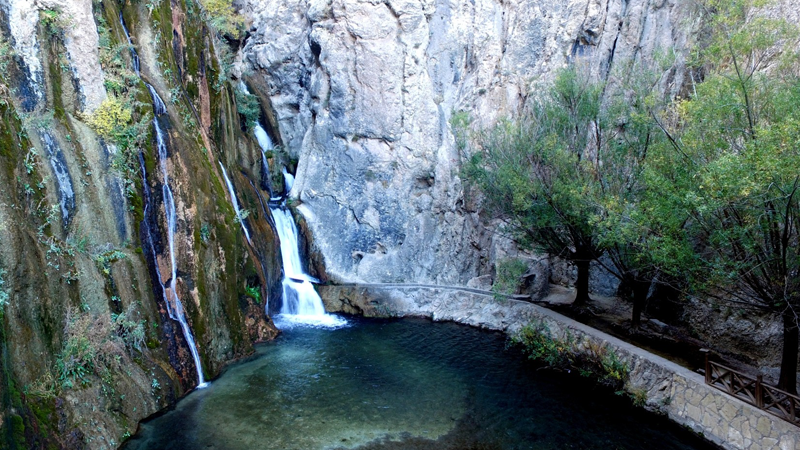Izmir
Turkey's third-largest city is proudly liberal and deeply cultured. Garlanded around the azure-blue Bay of İzmir, it has been an important Aegean port since ancient times, when it was the Greek city of Smyrna, and its seafront kordon (promenade) is as fetching and lively as any in the world.
The city's rich and fascinating heritage reflects the fact that it has been the home of Greeks, Armenians, Jews, Levantines and Turks over the centuries. While not as multicultural these days, it still has resident Jewish and Levantine communities, and its unique and delicious cuisine attests to this.
Foreign visitors here are largely limited to business travellers and tourists en route to Ephesus, however, a large amount of them still remain in Izmir, as the city is home to compelling attractions including one of Turkey's most fascinating bazaars, multiple museums; including an impressive museum of history and art, and a local lifestyle as laid-back as it is welcoming.



Kusadası
Kuşadası, which means "bird island" in Turkish, is set in a superb gulf in the Aegean region of Turkey and is known for its turquoise sparkling water of the Aegean Sea, broad sandy beaches, bright sun and large marina with a capacity for 600 boats. A glorious ancient city stands beside it, Ephesus with millions of visitors from tours each year. The town is only 80 kilometres (50 miles) from Adnan Menderes Airport in Izmir. Numerous holiday villages and hotels line its shores and hundreds of restaurants serves food from all around the world and, of course, Turkish Cuisine, which is one of the largest cuisines of the world. There are also many hostels, discos, bars, cafeterias, pubs and "Turkish Nights"; all those to cater holiday-makers.
Kuşadası has retained a certain earthiness to it and inexpensive meals and pensions can still be found in town. Many shops do a brisk trade with passengers from hundreds of cruise ships that dock for a day or two, allowing enough time for a trip to Ephesus and a shopping expedition.
The tiny Güvercin Adası (Pigeon Island) is connected to the mainland in the town center with a causeway. Its romantic setting includes a well-maintained flower garden which surrounds the restored 14th-15th century fortress and also houses a cafeteria.
Beaches close to town tend to get quite crowded during summer. If you prefer more serenity, head for Dilek Peninsula National Park, about 28 kilometres (17 miles) from Kuşadası. It is also possible to get to Greek island Samos by ferries that depart daily from the harbour of Kuşadası.



Malatya
Malatya is situated at the foot of the anti Taurus Mountains, and is an agricultural, industrial and stockbreeding center of Eastern Anatolia. The fertile plain is famous for its apricot growing and many delicious confections are made from it, as desserts as well. This province was called "Maldiya" in ancient times, taking its name from the Hittite language. It is located 670 kilometers (416 miles) east of Ankara, and the two small towns outside the city constitute the most important sites for visiting.
Aslantepe, at a distance of 7 kilometers (4,3 miles), was once the capital of a Hittite state and dates back to the first millennium BC. It is the city carrying the old Hittite traditions and styles, and inside the city walls a palace has been found, with statues and reliefs, which are examples of the artistic works of that age.
Battalgazi, 9 kilometers (5,6 miles) from Malatya, is an ancient city of the Byzantine period, known as "Melitene" in those times. The city walls of this medieval center were constructed by the Byzantines. Inside the town, there is the Ulu Mosque from 1247, which was built by the Seljuk’s, reflecting their distinct architectural style.
The archaeological finds from Malatya are housed in the city museum, including new artifacts found in the lower Euphrates area. The museum, taken into service in 1969 in a temporary building and then moved to its new place near Kernek Park in 1979, has over 15.000 artifacts on display. There is a wide range of exhibitions ranging from the fossils to sand rocks found in Malatya area, and many objects dating back to Neolithic, Chalcolithic, and Bronze Age periods, such as small sculptures, obsidian knives, sickles, arrow ends, cutters and perforators, swords and spear ends, seal prints, rythons, and human grave findings. Hittite, Urartu, Roman, Byzantine, Seljuk and Ottoman period works are also exhibited in the museum.
Next to this museum, there is a nice and original bazaar. Copper objects are sold along an entire street here, and it is a nice shopping place, which will add colour to your visit.



